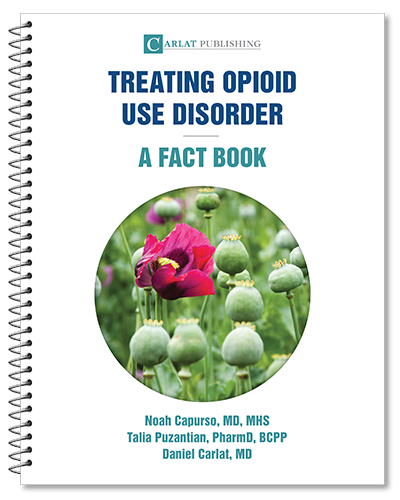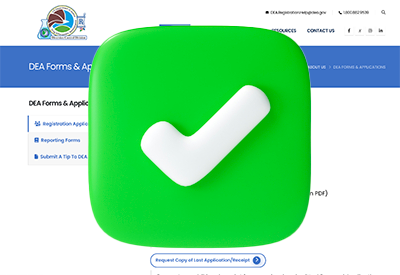Home » How to Diagnose and Treat Gambling Disorder
How to Diagnose and Treat Gambling Disorder
December 1, 2014
From The Carlat Addiction Treatment Report
Daniel Carlat, MD
Your typical patient with a gambling disorder may not fit yesterday’s stereotype.
Consider this case study:
A 42-year-old woman presented for relationship issues and problems with gambling. She had begun gambling by buying scratch tickets when she was in her early 30s. At times, she would spend up to $300 per day on these lottery tickets. She had tried to solve the problem by avoiding convenience stores where the tickets were sold but had found it difficult because they are so ubiquitous. She had often lied to her husband about her problem. She was preoccupied most of the day with thoughts about going to the store to buy more tickets. She began going to Gamblers Anonymous meetings, a twelve-step program for people with gambling problems, with some success. At the same time her relationship with her husband was deteriorating and she was reporting symptoms of depression robust enough to meet criteria for major depressive disorder. A trial of fluvoxamine at a dose of 100 mg/day was successful for mitigating her depressive symptoms and also helped her to maintain her attendance at all Gamblers Anonymous meetings and to stop her gambling.
Gambling has changed over the years. For one, there’s a whole lot more of it going on. About 75% of Americans above the age of 12 report having gambled in the past year, according to the National Council on Problem Gambling. Gambling is widespread, with some form of legalized gambling available in 48 states and the District of Columbia—only Utah and Hawaii have resisted the trend.
And there are more ways to gamble. Internet gambling is a new concern, along with the burgeoning phenomenon of social casino gaming—gambling games played on Facebook and other social networks. These games are the fastest growing segment of the gambling industry, with an estimated 170 million monthly average users and revenues of $2 billion last year.
While gamblers tend not to seek out treatment (fewer than 10%), chances are you have seen patients with gambling issues, and you’ll see more of them over the next few years. In this article we give you a primer on diagnosis and treatment of gambling disorder.
Diagnosing the Disorder
The basic DSM-5 definition of gambling disorder is quite helpful: “the failure to resist gambling impulses despite severe personal, family, or occupational consequences.” If you were to use this as your guide, chances are that you would accurately diagnose most cases of this disorder.
The name of the problem has changed over the years. DSM-III called it “compulsive gambling.” In DSM-IV, it was renamed “pathological gambling” and the latest edition, DSM-5, calls it “gambling disorder,” and has recategorized it as a type of addiction—you’ll find it in the “Substance-Related and Addictive Disorders” section of the manual. Much ink has been spilt parsing out whether gambling disorder is more appropriately considered an impulse disorder (such as ADHD), a conduct disorder, an obsessive compulsive problem, or an addiction problem. Depending on the patient, there may be elements of all four. Keeping this in mind might give you better insight into your particular patient’s motivations, and will help you better tailor your treatment.
In order to formally diagnose gambling disorder, you have to establish that your patient has had at least four of a list of nine potential symptoms (“criteria”) in a 12-month period, and that the gambling problem isn’t caused by a manic episode. These core symptoms include factors such as wanting to gamble badly, always thinking about gambling, having a hard time resisting the urge to gamble, etc.
One way to remember the basic criteria is with the following mnemonic, Tempted With Casinos:
A validated rapid screen for gambling problems is the CLiP questionnaire (similar to the CAGE questionnaire for substance abuse), which evaluates loss of control, lying, and preoccupation.
A positive answer to one of these questions indicates a high likelihood of problem gambling (Toce-Gerstein M et al, J Gambl Stud 2009;25(4):541–555).
Prevalence
The well-known US National Comorbidity Survey Replication (which is somewhat outdated, since it is based on interviews conducted from 2001–2003) estimated that 78% of all Americans have gambled at least once in their lives, but only 0.6% have had pathological gambling, while 2.3% have had “problem gambling” (defined as meeting at least one symptom of DSM-5’s criterion A).
The average age of onset of pathological gambling was about 17, the problem persisted an average of nine years, and the largest gambling loss in a single year averaged $4,800. The average gambler partakes in a range of gambling activities. The most common types of gambling are lottos/scratch tickets (86% of pathological gamblers), slot machines or bingo (77%), and casinos (78%)(Kessler RC et al, Psychol Med 2008;38(9):1351–1360).
Patients with gambling disorder are at high risk for other psychiatric problems. In the Kessler study, 46% of pathological gamblers were alcohol or drug abusers, 60% had an anxiety disorder, 38% had depression, and 17% had bipolar disorder.
Etiology
While nobody knows what causes gambling addiction in a biological sense, experts note that many of the same brain regions light up among problem gamblers as among drug addicts—such as the ventral striatum and the orbitofrontal cortex (Bullock SA and Potenza MN, Curr Psychopharmacol 2012;1(1)). None of the neurobiological studies have produced successful treatment yet.
Treatment
Psychosocial
This section is based mainly on a recent review of psychological treatments for gambling disorder (Rash CJ and Petry NM, Psychol Res Behav Manag 2014;7:285–295).
To begin with, it’s probably helpful to know that gambling disorder is often transient, episodic, and self-resolving. Studies have shown that over the course of a given year about 33% of problem gamblers will recover on their own. In-depth interviews of people who have recovered on their own show that they use practical means to do so, including avoiding going to places that remind them of gambling, and involving themselves in time-consuming activities that take their minds off gambling.
As a clinician, you’re more likely to see the more seriously affected patients who need treatment—either because they want it or because they are forced into it by spouses or the legal system. Studies of psychotherapy for gambling show that all techniques work better than no treatment at all, and no one technique is superior to others.
An easy intervention for a busy psychiatrist is to recommend that your patients attend Gamblers Anonymous (GA) meetings, which are increasingly widely available, especially during the current national binge to approve new casinos. As you can imagine, there are no good, randomized double-blind studies on GA (would such a study even be possible?), but various retrospective and open studies have implied a benefit of GA, at least for those who keep going to meetings. Thus, you can accurately tell patients that GA meetings are effective—but only if they attend regularly.
In terms of more formal interventions, behavior therapy, cognitive therapy, and motivational interviewing all appear to work, at least better than no therapy at all. In behavior therapy you help your patients avoid high-risk situations and desensitize them to these environments when they can’t avoid them. One strategy, for example, is to have patients gradually spend more and more time close to, and then inside of, casinos, and provide them with coping skills needed to avoid partaking of the gambling activities.
In cognitive therapy, you identify distorted cognitions associated with gambling, such as: overestimating the probability of winning; having an illusion of control over the outcome of the gambling; or the belief that a win is due after a series of losses (the so-called “gambler’s fallacy”). It’s likely that the most effective treatments combine cognitive and behavioral approaches.
A different approach is motivational interviewing. This is a technique often used in addictions in which you address your patient’s ambivalence about whether they really want to stop the behavior and allow them to come up with their own reasons for doing so. Though studied less, motivational interviewing appears to work as well as other approaches.
Medications
Various medications have shown promise in helping patients with gambling disorder (you can find individual references in a recent review paper, Pirritano D et al, Biomed Res Int 2014:728038; while the paper focuses on the disorder in Parkinson’s disease, it has a good general review of gambling treatment). Possibly the most robust data is on naltrexone, the opioid antagonist, which has shown benefit in both controlled and open trials, often at high doses up to 250 mg/day.
On the theory that gambling disorder shares certain features with OCD, SSRIs have been tested, but the results are mixed. For example, both fluvoxamine and paroxetine have been tested in small, randomized, controlled trials. In each case, one trial showed a benefit over placebo while the other did not. For the positive trials, the mean dose of fluvoxamine was 195 mg/day, and the mean dose of paroxetine was 51.7 mg/day. The best way to think about SSRIs is that they might be effective for some people with gambling disorder, and are particularly worth trying if your patient has a comorbid condition responsive to SSRIs (as was true for my patient described in the vignette at the beginning of this article).
Another logical treatment approach is to use mood stabilizers, since one of the symptoms of mania is irresponsible spending, of which gambling is an example. One small study suggested that sustained release lithium (mean dose, 1150 mg once a day) might be effective (Hollander E et al, Am J Psychiatry, 2005;162(1):137–145).
One interesting aspect of the psychopharmacology of gambling is that when patients with Parkinson’s disease are given dopamine agonist medications (which are the most effect treatments for the disorder), their risk of developing gambling disorder increases by 50%. The implication for non-Parkinson’s patients is, theoretically, that gambling disorder is caused by too much dopamine, and that dopamine blockers (ie, antipsychotics) should be effective. But they are not. Three studies of olanzapine have been negative, and small studies of aripiprazole have indicated that it might actually worsen gambling behavior.
Dr. Carlat’s Verdict: Gambling disorder is treatable—refer patients to GA, use cognitive behavioral therapy, and try naltrexone for core symptoms, and SSRIs when there are comorbidities.
Addiction TreatmentConsider this case study:
A 42-year-old woman presented for relationship issues and problems with gambling. She had begun gambling by buying scratch tickets when she was in her early 30s. At times, she would spend up to $300 per day on these lottery tickets. She had tried to solve the problem by avoiding convenience stores where the tickets were sold but had found it difficult because they are so ubiquitous. She had often lied to her husband about her problem. She was preoccupied most of the day with thoughts about going to the store to buy more tickets. She began going to Gamblers Anonymous meetings, a twelve-step program for people with gambling problems, with some success. At the same time her relationship with her husband was deteriorating and she was reporting symptoms of depression robust enough to meet criteria for major depressive disorder. A trial of fluvoxamine at a dose of 100 mg/day was successful for mitigating her depressive symptoms and also helped her to maintain her attendance at all Gamblers Anonymous meetings and to stop her gambling.
Gambling has changed over the years. For one, there’s a whole lot more of it going on. About 75% of Americans above the age of 12 report having gambled in the past year, according to the National Council on Problem Gambling. Gambling is widespread, with some form of legalized gambling available in 48 states and the District of Columbia—only Utah and Hawaii have resisted the trend.
And there are more ways to gamble. Internet gambling is a new concern, along with the burgeoning phenomenon of social casino gaming—gambling games played on Facebook and other social networks. These games are the fastest growing segment of the gambling industry, with an estimated 170 million monthly average users and revenues of $2 billion last year.
While gamblers tend not to seek out treatment (fewer than 10%), chances are you have seen patients with gambling issues, and you’ll see more of them over the next few years. In this article we give you a primer on diagnosis and treatment of gambling disorder.
Diagnosing the Disorder
The basic DSM-5 definition of gambling disorder is quite helpful: “the failure to resist gambling impulses despite severe personal, family, or occupational consequences.” If you were to use this as your guide, chances are that you would accurately diagnose most cases of this disorder.
The name of the problem has changed over the years. DSM-III called it “compulsive gambling.” In DSM-IV, it was renamed “pathological gambling” and the latest edition, DSM-5, calls it “gambling disorder,” and has recategorized it as a type of addiction—you’ll find it in the “Substance-Related and Addictive Disorders” section of the manual. Much ink has been spilt parsing out whether gambling disorder is more appropriately considered an impulse disorder (such as ADHD), a conduct disorder, an obsessive compulsive problem, or an addiction problem. Depending on the patient, there may be elements of all four. Keeping this in mind might give you better insight into your particular patient’s motivations, and will help you better tailor your treatment.
In order to formally diagnose gambling disorder, you have to establish that your patient has had at least four of a list of nine potential symptoms (“criteria”) in a 12-month period, and that the gambling problem isn’t caused by a manic episode. These core symptoms include factors such as wanting to gamble badly, always thinking about gambling, having a hard time resisting the urge to gamble, etc.
One way to remember the basic criteria is with the following mnemonic, Tempted With Casinos:
- Tolerance (a need to gamble with more and more money to achieve the gambling high)
- Withdrawal syndrome (feeling restless when forced to give up gambling)
- Loss of Control (not being able to stop your gambling even after multiple negative consequences)
A validated rapid screen for gambling problems is the CLiP questionnaire (similar to the CAGE questionnaire for substance abuse), which evaluates loss of control, lying, and preoccupation.
- (Control) Have you ever tried to stop, cut down, or control your gambling?
- (Lying) Have you ever lied to family members, friends, or others about how much you gamble or how much money you lost on gambling?
- (Preoccupation) Have there ever been periods lasting two weeks or longer when you spent a lot of time thinking about your gambling experiences or planning out future gambling ventures or bets?
A positive answer to one of these questions indicates a high likelihood of problem gambling (Toce-Gerstein M et al, J Gambl Stud 2009;25(4):541–555).
Prevalence
The well-known US National Comorbidity Survey Replication (which is somewhat outdated, since it is based on interviews conducted from 2001–2003) estimated that 78% of all Americans have gambled at least once in their lives, but only 0.6% have had pathological gambling, while 2.3% have had “problem gambling” (defined as meeting at least one symptom of DSM-5’s criterion A).
The average age of onset of pathological gambling was about 17, the problem persisted an average of nine years, and the largest gambling loss in a single year averaged $4,800. The average gambler partakes in a range of gambling activities. The most common types of gambling are lottos/scratch tickets (86% of pathological gamblers), slot machines or bingo (77%), and casinos (78%)(Kessler RC et al, Psychol Med 2008;38(9):1351–1360).
Patients with gambling disorder are at high risk for other psychiatric problems. In the Kessler study, 46% of pathological gamblers were alcohol or drug abusers, 60% had an anxiety disorder, 38% had depression, and 17% had bipolar disorder.
Etiology
While nobody knows what causes gambling addiction in a biological sense, experts note that many of the same brain regions light up among problem gamblers as among drug addicts—such as the ventral striatum and the orbitofrontal cortex (Bullock SA and Potenza MN, Curr Psychopharmacol 2012;1(1)). None of the neurobiological studies have produced successful treatment yet.
Treatment
Psychosocial
This section is based mainly on a recent review of psychological treatments for gambling disorder (Rash CJ and Petry NM, Psychol Res Behav Manag 2014;7:285–295).
To begin with, it’s probably helpful to know that gambling disorder is often transient, episodic, and self-resolving. Studies have shown that over the course of a given year about 33% of problem gamblers will recover on their own. In-depth interviews of people who have recovered on their own show that they use practical means to do so, including avoiding going to places that remind them of gambling, and involving themselves in time-consuming activities that take their minds off gambling.
As a clinician, you’re more likely to see the more seriously affected patients who need treatment—either because they want it or because they are forced into it by spouses or the legal system. Studies of psychotherapy for gambling show that all techniques work better than no treatment at all, and no one technique is superior to others.
An easy intervention for a busy psychiatrist is to recommend that your patients attend Gamblers Anonymous (GA) meetings, which are increasingly widely available, especially during the current national binge to approve new casinos. As you can imagine, there are no good, randomized double-blind studies on GA (would such a study even be possible?), but various retrospective and open studies have implied a benefit of GA, at least for those who keep going to meetings. Thus, you can accurately tell patients that GA meetings are effective—but only if they attend regularly.
In terms of more formal interventions, behavior therapy, cognitive therapy, and motivational interviewing all appear to work, at least better than no therapy at all. In behavior therapy you help your patients avoid high-risk situations and desensitize them to these environments when they can’t avoid them. One strategy, for example, is to have patients gradually spend more and more time close to, and then inside of, casinos, and provide them with coping skills needed to avoid partaking of the gambling activities.
In cognitive therapy, you identify distorted cognitions associated with gambling, such as: overestimating the probability of winning; having an illusion of control over the outcome of the gambling; or the belief that a win is due after a series of losses (the so-called “gambler’s fallacy”). It’s likely that the most effective treatments combine cognitive and behavioral approaches.
A different approach is motivational interviewing. This is a technique often used in addictions in which you address your patient’s ambivalence about whether they really want to stop the behavior and allow them to come up with their own reasons for doing so. Though studied less, motivational interviewing appears to work as well as other approaches.
Medications
Various medications have shown promise in helping patients with gambling disorder (you can find individual references in a recent review paper, Pirritano D et al, Biomed Res Int 2014:728038; while the paper focuses on the disorder in Parkinson’s disease, it has a good general review of gambling treatment). Possibly the most robust data is on naltrexone, the opioid antagonist, which has shown benefit in both controlled and open trials, often at high doses up to 250 mg/day.
On the theory that gambling disorder shares certain features with OCD, SSRIs have been tested, but the results are mixed. For example, both fluvoxamine and paroxetine have been tested in small, randomized, controlled trials. In each case, one trial showed a benefit over placebo while the other did not. For the positive trials, the mean dose of fluvoxamine was 195 mg/day, and the mean dose of paroxetine was 51.7 mg/day. The best way to think about SSRIs is that they might be effective for some people with gambling disorder, and are particularly worth trying if your patient has a comorbid condition responsive to SSRIs (as was true for my patient described in the vignette at the beginning of this article).
Another logical treatment approach is to use mood stabilizers, since one of the symptoms of mania is irresponsible spending, of which gambling is an example. One small study suggested that sustained release lithium (mean dose, 1150 mg once a day) might be effective (Hollander E et al, Am J Psychiatry, 2005;162(1):137–145).
One interesting aspect of the psychopharmacology of gambling is that when patients with Parkinson’s disease are given dopamine agonist medications (which are the most effect treatments for the disorder), their risk of developing gambling disorder increases by 50%. The implication for non-Parkinson’s patients is, theoretically, that gambling disorder is caused by too much dopamine, and that dopamine blockers (ie, antipsychotics) should be effective. But they are not. Three studies of olanzapine have been negative, and small studies of aripiprazole have indicated that it might actually worsen gambling behavior.
Dr. Carlat’s Verdict: Gambling disorder is treatable—refer patients to GA, use cognitive behavioral therapy, and try naltrexone for core symptoms, and SSRIs when there are comorbidities.
KEYWORDS addiction free_articles
Issue Date: December 1, 2014
Recommended
Newsletters
Please see our Terms and Conditions, Privacy Policy, Subscription Agreement, Use of Cookies, and Hardware/Software Requirements to view our website.
© 2025 Carlat Publishing, LLC and Affiliates, All Rights Reserved.


_-The-Breakthrough-Antipsychotic-That-Could-Change-Everything.jpg?1729528747)



